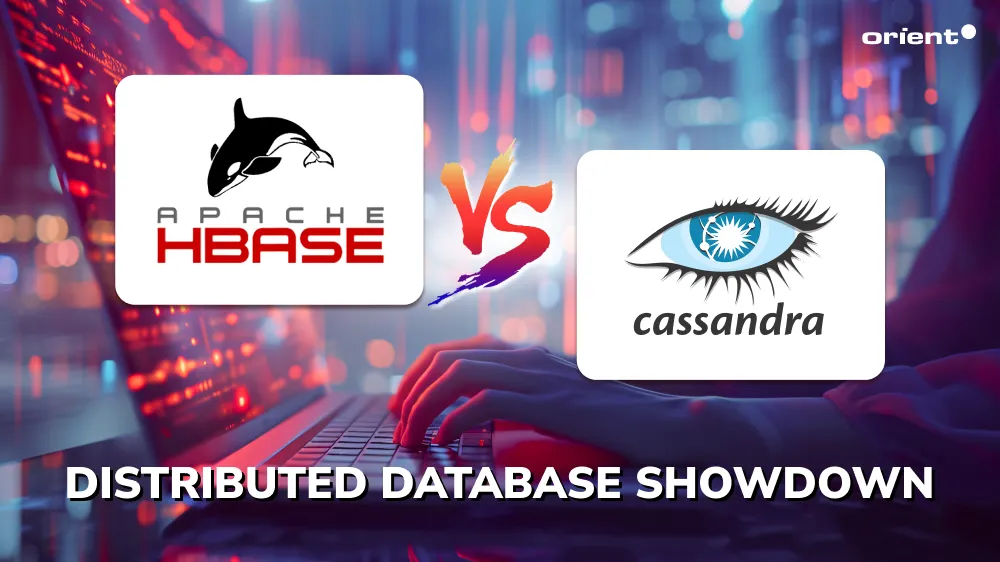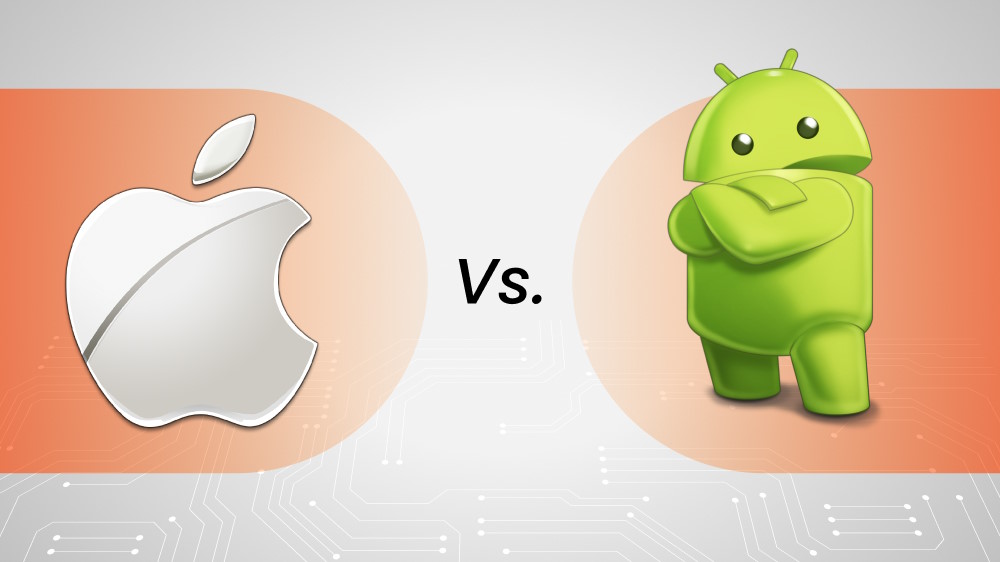Distributed Database Showdown: HBase Vs. Cassandra

Content Map
More chaptersHBase and Cassandra are two NoSQL databases that store big data in a non-tabular format. Both databases have their strengths and weaknesses, which can make choosing the best solution a tough decision. Understanding the differences and similarities between the two can help you make an informed decision about your database requirements.
Read on to learn more about the HBase vs. Cassandra comparison, including what sets them apart and how to choose the best one to suit your requirements.
What Is HBase?

HBase is an open-source NoSQL database developed on top of the Hadoop Distributed File System or HDFS. HDFS is the primary storage system for the open-source big data framework, Hadoop. HBase is column-oriented and horizontally scalable, which means that each table stores data in a key-value format and you can add any number of columns as you wish.
HBase is mainly used to read and write large volumes of data to the HDFS. It is especially useful for handling dynamic workloads in a distributed computing environment. Many developers praise HBase for its ability to ensure data consistency.
What Are the Three Main Servers of HBase?
The three main servers in a master-slave HBase architecture are HMaster, Region, and ZooKeeper.
HMaster
The HMaster server is responsible for region assignment in a HBase cluster. It oversees the Hbase cluster’s overall structure and functionality, ensuring that the size and distribution of each region are roughly equal.
Region
The Region server is responsible for providing data to clients. Each Region server consists of regions, which are a series of adjacent rows that exist between the start and end keys. To put it another way, a region contains a subset of data within an entire dataset.
ZooKeeper
The ZooKeeper server functions as a coordination service. It is primarily used in a distributed system – a collection of computers that work together over the internet to function as a central computer for a user. ZooKeeper keeps these computers active, aware of each other, and able to facilitate synchronous communication.
What Is Cassandra?

Like Hbase, Cassandra is also an open-source NoSQL distributed data. It has similar features to HBase like high fault tolerance, linear scalability, and unlimited continuous availability.
However, from an architectural standpoint, Cassandra is different. The most notable difference is how it follows the CAP theorem. The CAP theorem stipulates that a distributed system can provide only two of three properties simultaneously. Those three properties are:
- Consistency: All nodes can see the same data at the same time. On consistent big data databases, if a user performs a read operation, the system will return the value of the most recent write operation.
- Availability: The system remains operational at all times in an available database. Even during a partition or a break in communication between nodes, the system will respond to every request.
- Partition Tolerance: Prevents system failure, even during a break in communication between nodes.
In Cassandra, the system maintains availability when it encounters a partition. But, in HBase, the system maintains consistency when it encounters a partition.
What Are the Main Components of Cassandra?
The six main components that enable Cassandra to function as a database storage solution are:
Nodes
Individual servers or machines that store data and communicate with over nodes of the peer-to-peer protocol. Under this arrangement, every node is equal, meaning there are no slave or master nodes. Aside from storing data, nodes also handle read and write requests and maintain each cluster’s health.
Servers
Servers are any machine that has the Cassandra software installed on it. Each node has a server that handles core processes, such as distributing replica data to other nodes.
Racks
Racks are collections of servers. The purpose of racks is to ensure that replicas are distributed among nodes in a logical order. Having multiple nodes on separate racks helps provide greater fault tolerance and availability.
Data Centers
Data centers consist of a logical collection of servers. The main purpose of data centers is to group and configure related nodes into clusters for easier replication. This arrangement helps reduce latency and prevents transactions from impacting other workloads.
Clusters
Clusters are collections of nodes that work together in the Cassandra software. Since Cassandra takes a decentralized approach to managing clusters, there is no single point of control or failure. This decentralization helps ensure high availability and fault tolerance.
Keyspaces and Tables
Cassandra stores data in tables. Tables are stored in keyspaces, which define how data is organized and replicated among tables within a keyspace.
What Are the Differences Between HBase and Cassandra?

Both HBase and Cassandra are NoSQL distributed databases. They support large amounts of structured and unstructured data, are scalable, use replication to prevent data loss, and are column-oriented systems. However, they have a different architectural design, which makes them suitable for different data science applications. Let’s explore those differences in greater detail.
Architectural Style
Since HBase and Cassandra are distributed systems, their behavior is defined by the CAP theorem. However, they prioritize different properties when they encounter a partition.
When HBase encounters a partition, clients can still see the same data simultaneously but are not guaranteed a response to their request. But, when Cassandra encounters a partition, clients are guaranteed a response to their request, but they may not see the same data simultaneously.
Data Models
HBase and Cassandra store data in groups, rows, and columns. But do they do so differently. Cassandra stores data in tables, which reside in keyspaces – objects that store column families.
HBase, on the other hand, functions more like a traditional relational database. Instead of giving each column family a unique identifier, HBase has row keys that function like a primary key, a column in a relational database that serves as a unique identifier for every record in the table.
Performance
With Casandra, latency increases as the system fetches more data. However, Cassandra is faster than HBase at performing write operations, as it can write data to log and cache simultaneously. Also, Cassandra is slower than HBase at performing read operations, as searches take longer if they involve a non-partition table or secondary key.
With HBase, latency reduces as the number of data read and write operations increase, as it does not have to search through partition tables. However, HBase doesn’t support concurrent writing, making it slower than Cassandra when performing write operations. Furthermore, HBase must go through ZooKeeper to perform write operations, increasing waiting times.
Query Language
Cassandra uses the Cassandra Query Language (CQL). CQL allows Cassandra to add, remove, and update records in a syntax similar to SQL. It offers more features and functionalities than standard HBase shell commands. One such feature is a materialized view, which builds a new table on top of another table’s data but with a new primary key and new properties.
The HBase query language uses shell commands, which are more difficult than CQL to learn and less feature-rich. However, users can add Apache Phoenix, which adds new features and commands.
Integrations
HBase supports various integrations within the Hadoop ecosystem. These include components like MapReduce, a software framework for processing big data in parallel, and Spark, a distributed processing system for managing big data.
Cassandra also supports various configurations. These include third-party integrations like CAPI-Rowcache and Stratio’s Cassandra Lucene Index. The latter incorporates full-text search capabilities into Cassandra, similar to a plugin like ElasticSearch.
Storage
HBase stores data in a column-oriented structure, organizing data in columns instead of rows. HBase also supports compression, which helps increase storage capacity and provide faster data retrieval.
Cassandra, on the other hand, uses a Merge-Tree-based data structure to store data. Data is first stored in an in-memory structure called a memtable, which periodically stores data until reaching a certain threshold. Then, any future data is written to a persistent storage solution called SSTable (Sorted Strings Table).
How to Choose Between HBase and Cassandra
Now that you understand what sets HBase and Cassandra apart let us discuss how to choose between the two for your project.
Use Hbase for:
Generally, Apache HBase is best suited for Hadoop apps that frequently update and delete data. In a healthcare setting, HBase would be good for genome sequencing and storing patients’ disease history, as this data often changes frequently.
HBase is also useful for Hadoop apps that require data consistency, such as apps for storing fingerprint documents and identifying plagiarism.
Use Cassandra for:
Cassandra is best suited for Hadoop apps that require fast and minimal setups. Since Cassandra is a standalone product, it contains all the necessary components a user needs to get started quickly.
Apache Cassandra is also suited for Hadoop apps that require frequent write operations. Examples of this include apps that log transactional data, such as purchases, receipts, and shopping history, and apps that track deliveries in real time.
Choosing the Right Distributed Database
Choosing the right distributed database is vital to a successful big data strategy. However, knowing which system is right for you can be challenging. One way to make this decision easier is to approach a team of data science experts. Think of it as big data outsourcing.
At Orient Software, we spend time understanding your needs and proposing a custom solution that meets your unique requirements. We have an expert team of data scientists, engineers, and analysts who can work closely with you to identify and remedy your biggest data challenges.
Aside from providing you with valuable technological insight and advice, we also consider your business goals when developing a custom roadmap. This way, you have a better chance of achieving your technical and business requirements simultaneously.
Contact us to learn how our data science services can help you drive better decision-making.







